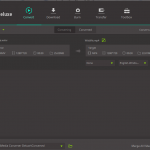How AEC Software Can Reduce Project Overrun Costs through Improved Integration & Accessibility
Everyone in the construction industry knows that project overrun costs are commonplace. KPMG research indicates that only 31% of construction projects come within 10% of the budget. Obviously, as the construction industry navigates the currently volatile marketplace, and tries to adapt to future trends, this is going to be a major area for construction organizations to focus on.
The good news is that there are myriad ways in which organizations can tackle the challenge of project overrun costs, including better use of project management tools, better forecasting of costs at the bid stage, and better use of AEC software throughout the construction process.

AEC Software – Currently a Liability?
The tools that organizations use to deliver projects do of course bring enormous benefits to them. From floor plan measuring software to CAD tools, technology has already helped deliver projects faster and to a higher standard than was possible solely with manual tools. However, as the number of tools and their capabilities grow, a new challenge is emerging – one of integration and accessibility.
In this article, we’ll look at the challenges that a growing AEC software landscape is presenting in terms of integration and accessibility – and what can be done to solve them.
How AEC Software Can Contribute to Project Overrun Costs
Firstly, the increasing number of different applications that are involved in digital construction workflows presents a challenge. In a modern workflow, organizations might use, among other tools:
- LiDAR scanning equipment and associated software
- Floor plan measuring software
- Point cloud mapping tools
- CAD tools
Often, data needs to be moved between and through these applications during a project. The more applications there are, the greater the risk that time is lost in that transfer: making sure that file types are compatible, that files are set up correctly to be used in other applications, even time spent simply moving files from one place to another. In fact, as the files used in construction projects have grown larger due to advances in scanning and design technology, the time taken to move those files around has grown correspondingly.
Alongside this, the challenge of being able to access data has grown too. Take point cloud files, for example. These files can be hundreds of gigabytes large – so large that they simply can’t be opened on regular computers. This means either that the organization needs to invest in more machines – or that only one machine can be used to open and work on these large files. This situation results in bottlenecks that cause physical delays – leading to knock-on costs – or to errors being made as project teams try to work around delays or rush to make up for lost time. Those errors, if not caught, result in increased change requests – and costs.
Even once the data is accessed, interpreting the data can often be complicated and confusing. For example, improvements in scanning technology have meant that point clouds now contain so much more information than they used to – all of which has to be interpreted and classified before it can be used by designers, for clash detection, or any of the other myriad uses of as-built software data in construction. This process is often still a manual one, which takes time and is error-prone, leading to the same consequences as not being able to access the data in the first place – delays and change requests adding costs to your project.
How to Reduce Project Overrun Costs When Using AEC Software
The good news is that there are things you can do to ensure that your AEC software continues to make your construction projects run smoother, faster, and on-budget. The trick is to invest wisely in the right tools. Look out for applications that:
- Are simple to learn and use, reducing time spent learning new systems and eliminating the need to rely on specialists to work the software.
- Support your data flowing smoothly through the entire project, becoming a “golden thread of truth” that all teams refer to and collaborate on when working on a project.
- Quickly convert data into application-agnostic formats that can be easily passed from application to application with no delays or compatibility issues.
- Where possible, minimize the size of the files you work with (for example, software that converts point clouds into intelligent segregated meshes, which can be up to 100x smaller and much easier to work with).
- Integrate with other software in your digital construction workflow without the need for plugins. Native integrations are likely to keep the process smoother from a user perspective, and simpler from an IT perspective.
One Part of the Puzzle – But an Important One
Of course, investing in AEC software that makes data accessible and integrates smoothly is just one part of the productivity puzzle. But it is a piece that has knock-on effects in other areas. Reducing change requests, for instance, also reduces manpower cost as employees aren’t required to work extra days to make changes; and while embracing project management tools and methodologies will certainly help construction organizations increase visibility of where issues and delays arise, investing in the right AEC software will actually help to mitigate those issues.
Lastly, it’s worth pointing out that solving your software challenges now is likely to bring benefits for years to come. The use cases for technology in construction are growing daily, with virtual reality becoming increasingly important, and scanning technology growing in use and capability every year. These developments will further exacerbate the current challenges in the AEC software landscape – but by taking steps now to smooth out your workflows and increase accessibility for your project teams, you’ll be better placed to capitalise on new innovations as they come to market – many of which could help you further reduce costs and deliver better quality construction for clients.
















